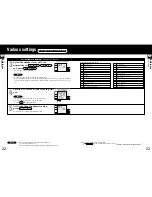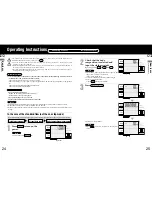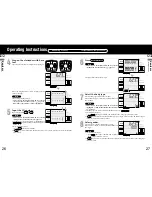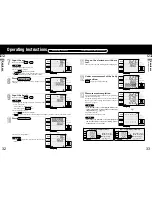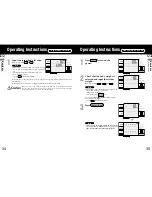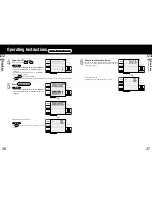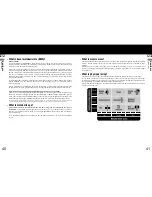
When
necessar
y
(Technical
notes)
When
necessar
y
(Technical
notes)
GB
GB
51
These inter-day changes stem from such causes as:
1) Temporary increases in body weight (total body water) through overeating and overdrinking
2) Dehydration due to heavy sweating during vigorous exercise
3) Dehydration due to alcohol consumption or the use of diuretics
4) Dehydration due to heavy sweating during saunas, etc.
Accordingly, it is recommended that instructions be provided to the subject to help eliminate these causes
when accurate measurements are needed.
50
- Factors giving errors in measurement
In the BIA method, impedance is measured and the body composition is calculated based on the value. It
is known that impedance changes by the amount of the total body water that occupies about 60% of
weight and the change in its distribution and temperature change. Therefore, for the purpose of research or
for daily repeating of measurements, the measurement conditions must be kept constant. Measurement
under the changing conditions of temperature and total body water distribution or blood flow volume of
extremities due to exercising, taking a bath, etc., affects the measurement result since the electric resistance
in the body also changes.
Therefore, it is recommended to measure under the following conditions for stable measurement.
1) 3 hours have passed after getting up and normal lifestyle activities are carried out during this period.
(The impedance transits staying at a high level if you remain sitting after getting up or drive a car, etc.)
2) 3 hours or more have passed after eating. (For 2 – 3 hours after eating, the impedance has a tendency to
decrease.)
3) 12 hours or more have passed after vigorous exercise for measurement. (The tendency toward changes
in impedance is not stable depending on the type and rigorousness of the exercise.)
4) If possible urinate before taking measurement.
5) For repeated measurements, measure at the same hour as much as possible. (At the same time of
measurement of weight, the measurements can be made more stable by measuring at the same time of
the day)
Very stable measured values can be obtained by measuring under the above conditions.
And in the development of this equipment, the following 6 items were set as conditions for the regression
equation.
1) Prohibition of alcohol intake for 12 hours before measurement
2) Prohibition of excessive exercise for 12 hours before measurement.
3) Prohibition of excessive eating and drinking the day before measurement
4) Prohibition of eating and drinking for 3 hours before measurement
5) Avoidance of the menstrual period (women)
2) Inter-day changes
The diagrams below offer examples of actual measurements made
of inter-day changes. A study was done to determine the degree of
change in the impedance between the feet during dehydration; the
first two days represent a normal daily routine, while in the latter
two days a state of dehydration was induced using a sauna.
No significant inter-day change was measured in body weight,
impedance between the feet, or body fat percentage during the
normal daily routine. During the dehydrated state, however, a
drop in body weight of 1kg was noted, with the impedance
between the feet rising approximately 15
Ω
on the first day of
dehydration and 30-35
Ω
on the second day. As a result, body fat
percentage was up by around 1% on the first day of dehydration
and by 1.5-2% on the second day.
As mentioned earlier, impedance increases when body weight is
reduced (such as by dehydration), and decreases when body
weight is increased through excess consumption of food and
drink. The inter-day change in impedance is thus inversely
proportional to the change in body weight.

